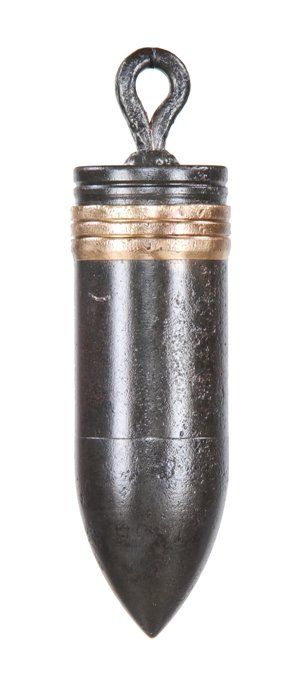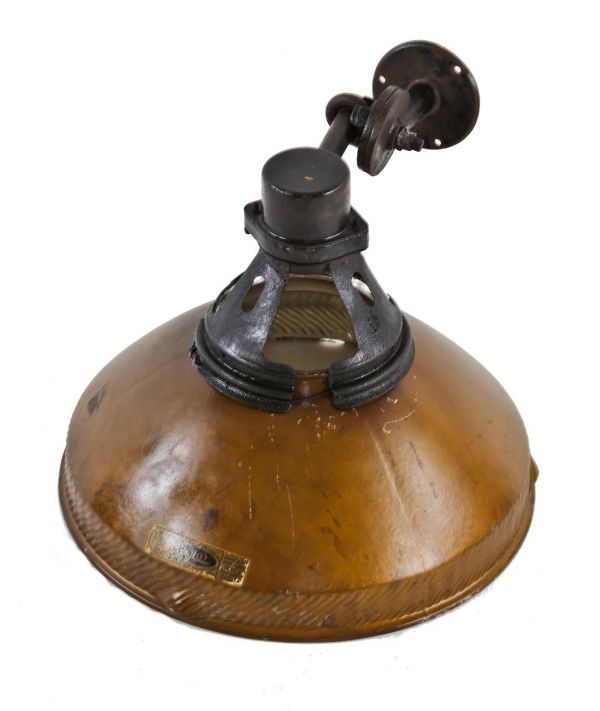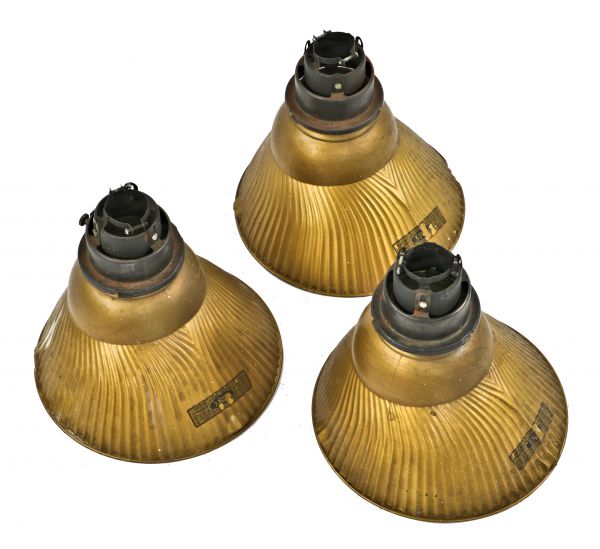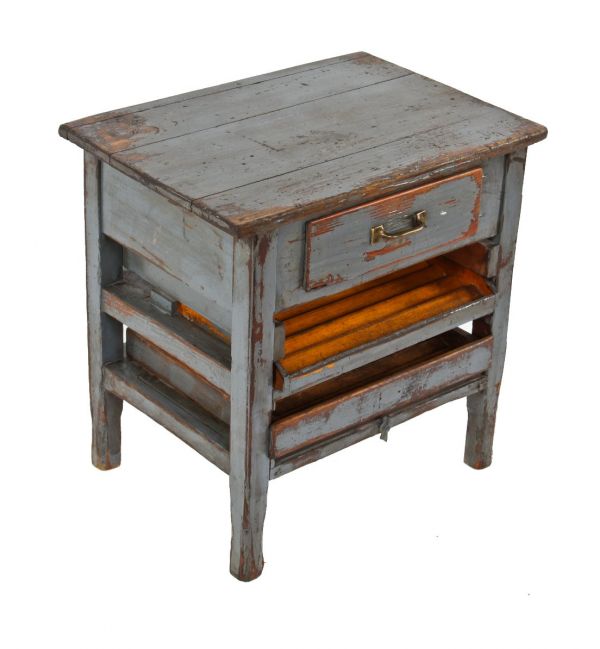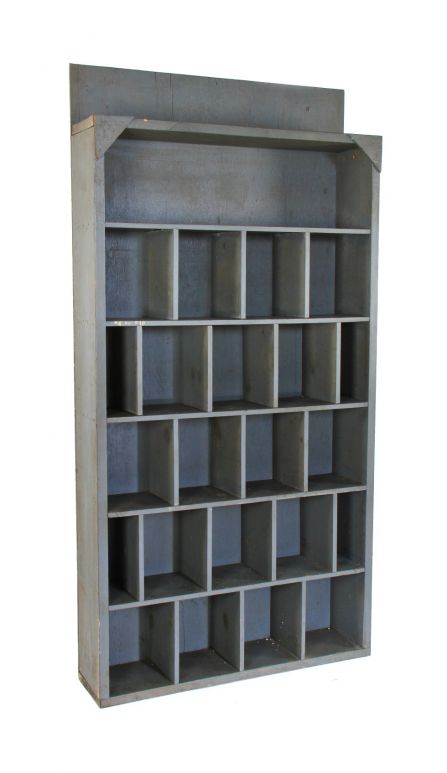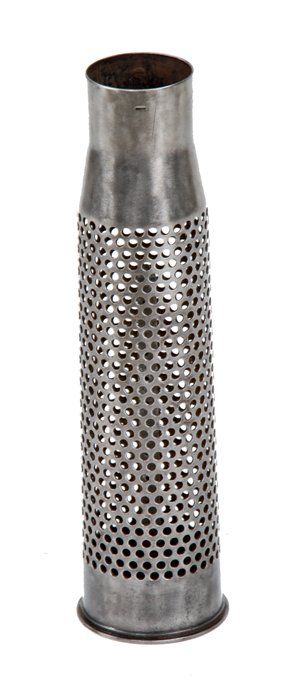c. early 20th century american base-fuzed armor-piercing solid steel battlefield artillery shell boat anchor with brass rotating bands
SOLD
Out of stock
SKU
UR-24725-16
fabricator unknown
original early 20th century american vintage industrial base-fuzed armor-piercing shell or projectile repurposed at some point as a fisherman's boat anchor. the solid steel ww1 or ww2-era projectile was fashioned with a wrought steel eye hook welded firmly to the base of the shell. largely unadorned with the exception of the solid brass incised line rotating band, which was used to engage the rifling on the gun and trap propellant gases at the rear of the projectile. thoroughly refinished and treated with a clear coat lacquer. fabricator unknown. armor-piercing (ap) shells were designed specifically to penetrate armor found on tanks, etc. from the 1860's to 1950's, a major application of armor-piercing projectiles was to defeat the thick armor carried on many warships. from the 1920's onwards, armor-piercing weapons were required for anti-tank missions. the late 1850's saw the development of the ironclad warship, which carried wrought iron armor of considerable thickness. this armor was practically immune to both the round cast-iron cannonballs then in use and to the recently developed explosive shell. the first solution to this problem was effected by major sir w. palliser, who invented a method of hardening the head of the pointed cast-iron shot. by casting the projectile point downwards and forming the head in an iron mold, the hot metal was suddenly chilled and became intensely hard (resistant to deformation), while the remainder of the mold, being formed of sand, allowed the metal to cool slowly and the body of the shot to be made tough (resistant to shattering). these chilled iron shots proved very effective against wrought iron armor, but were not serviceable against compound and steel armor, which was first introduced in the 1880's. a new departure therefore had to be made, and forged steel rounds with points hardened by water took the place of the palliser shot. at first, these forged-steel rounds were made of ordinary carbon steel, but as armor improved in quality, the projectiles followed suit. during world war ii, projectiles used highly alloyed steels containing nickel-chromium-molybdenum. highly advanced and precise methods of differentially hardening the projectile were developed during this period, especially by the german armament industry. the resulting projectiles gradually change from high hardness (low toughness) at the head to high toughness (low hardness) at the rear and were much less likely to fail on impact. due to the increase in armor thickness during the conflict, the projectiles’ impact velocity had to be increased to ensure perforation. at these higher velocities, the hardened tip of the shot or shell has to be protected from the initial impact shock, or risk shattering. to raise the impact velocity and stop the shattering, they were initially fitted with soft steel penetrating caps. the best performance penetrating caps were not very aerodynamic, so an additional ballistic cap was later fitted to reduce drag. the resulting projectile types were named armor-piercing capped projectiles.
You Might Also Like
WORDLWIDE SHIPPING
If required, please contact an Urban Remains sales associate.
NEW PRODUCTS DAILY
Check back daily as we are constantly adding new products.
PREMIUM SUPPORT
We're here to help answer any question. Contact us anytime!
SALES & PROMOTIONS
Join our newsletter to get the latest information

